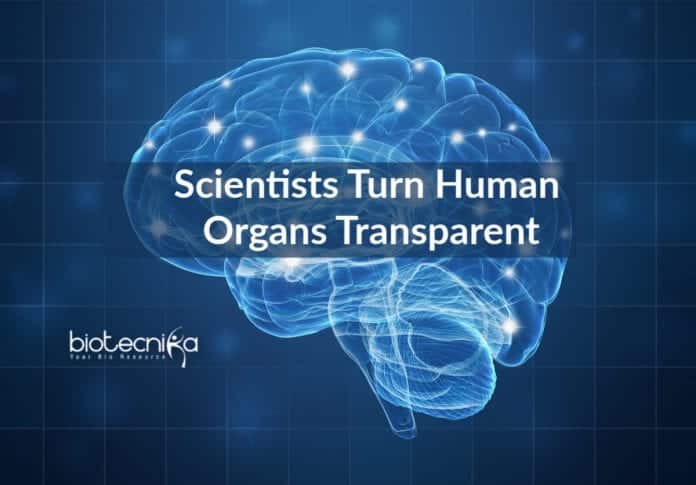Transparent Human Organs To Study Organ Functioning
To understand what is going on inside our organs required slicing up of the tissue or deep cuts to date. But it won’t be the case in the future.
3D printed transparent human organs using stem cells were developed by a group of researchers led by the director of the Institute for Tissue Engineering and Regenerative Medicine at the Helmholtz Institute Ali Ertürk in April 2019. The same team under Ertürk published a paper in the journal Cell about the modifications they made in their technique to create images of transparent human kidney, brain, and eye.
Optical clearing is the process behind creating transparent organs. The usual color of organs is due to the presence of
lipids, proteins, and water in the tissue that refracts light. The researchers added a chemical that alters the refraction, thus allowing the light to pass through the tissue.Adult human organs are built with light-blocking dense tissues that refract light. But researchers developed a new combination of chemicals that can penetrate through the human organ tissues, making them transparent. A laser-scanning microscope was used to take the images. Deep learning algorithms were employed to evaluate hundreds of millions of cells in 3D. The technique is called “Small-micelle-mediated Human orgAN Efficient clearing and Labeling,” or SHANEL.
Their organ maps could be used as templates for 3D printing functional human organs in the future. The team aims to cut down the wait for organ transplants by printing functional human organs. But the printed organs need to be tested in animals first.
Ertürk explained in a press release that the transplantation costs and the waiting time for matching organs are a real burden. But researchers are now one step closer to creating artificial organs on-demand using detailed knowledge about the cellular structure of human organs.






























